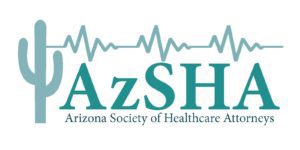All the benefits and perks you need for you and your family: Benefits from Day OnePaid Days Off from Day OneCareer DevelopmentWhole Person Wellbeing Resources Our promise to you: Joining…
Archive for month: May, 2022
Requisition ID 2022-50452 Job Location US-AZ-SCOTTSDALE Shift 01 – Days Department Legal Facility Support Services Position Type Regular Full-Time Physical Work Location and New Employee Orientation Location : Address 8125…
Register
By: Rachel Bus, Law Offices of Brelje and Associates P.C.
It‘s no secret that Arizona is experiencing a chronic physician shortage. Arizona’s Primary Care Office reported in 2021 that Arizona contains 644 federally designated Health Professional Shortage Areas (HPSAs) along with 37 Medically Underserved Areas (MUAs) and 10 Medically Underserved Populations (MUPs).[1] Arizona will require an additional 558 full-time primary care physicians to eliminate its shortage, and the issue will only worsen as our state’s population continues to explode. A fact not widely reported is that the recruitment of U.S.-trained International Medical Graduates, seeking a “J-1 Waiver” can be an important strategy to combat Arizona’s physician shortage.
International Medical Graduates (IMGs) are physicians who earned their medical degree abroad and then met certain credentialing and licensing requirements in order to gain acceptance into U.S. medical residency and fellowship programs. In order to be admitted to the U.S., many IMGs seek a J-1 exchange visitor visa sponsored by the Educational Commission for Foreign Medical Graduates (ECFMG). The J-1 visa comes with a stipulation, however. All J-1 physicians sponsored by ECFMG are subject to a two-year home residence requirement, under which they must return to their country of last residence for at least two years, before being allowed to come back to the U.S. under an H-1B work visa, and before receiving U.S. permanent residence (a “green card”).[2]
One way in which a J-1 physician may waive the two-year home residence requirement is through a commitment to full-time employment for three years in a medically underserved location.[3] This is one of those rare “win-win” scenarios: The IMG receives the opportunity to remain in the U.S. and put his or her medical training into practice, and some of the nation’s most underserved locations retain the talents of a physician who might not otherwise consider employment in the area.
In order for a J-1 waiver to be approved, the physician and the prospective employer must first seek the recommendation of a state health agency or an interested government agency. The state health agency recommendation is granted under a set of federal guidelines called the Conrad 30 program. Each state, irrespective of geographic size or population, has 30 J-1 waiver slots that it may award.[4] Here, the Arizona Department of Health Services (ADHS) administers the Conrad 30 program. In addition to the general federal guidelines of a contract covering three years’ full-time employment in a HPSA or MUA/P designated location, ADHS further requires that the employer demonstrate that it spent at least 6 months attempting to recruit a U.S. physician to the position and that the facility will offer sliding fee scale discounts to uninsured patients. Additionally, there are contract guidelines that must be adhered to.
Prospective employers and J-1 physicians should carefully review the ADHS requirements on its website.[5] The Arizona Conrad 30 program typically accepts applications through an electronic portal during a filing window that opens in October and closes in November each year. If more than 30 qualified applications are received, ADHS will score and rank the applications and award waiver recommendations to the top-scoring applicants.
Aside from the Conrad 30 program, J-1 physicians may also seek a clinical care waiver recommendation through U.S. Health and Human Services if they will be providing primary care services in HPSA locations with a score of 7 or higher.[6] The U.S. Department of Veterans Affairs may also serve to recommend J-1 physician waivers, with a commitment to work for three years providing healthcare within the agency, but only after all efforts to recruit a U.S. physician have been exhausted.[7]
Once the state health agency or interested government agency has recommended a J-1 waiver, the waiver application is then screened by the U.S. Department of State and finally approved by the U.S. Citizenship and Immigration Services. In all, applicants should anticipate the waiver process to take six to eight months. With the J-1 waiver approval in hand, the IMG’s employer may then petition for the physician to change from J-1 visitor status to H-1B work visa status, in which the physician will serve out the three-year waiver commitment. The physician may not change employers during that three-year period unless there is evidence that “extenuating circumstances” necessitated the change.[8]
With the challenges inherent in physician recruitment and retention, it is important to understand all of the available options. The use of the J-1 waiver programs available in Arizona may be one additional tool to combat Arizona’s rising physician shortage.
[1] https://www.azdhs.gov/documents/prevention/health-systems-development/data-reports-maps/reports/primary-care-needs-assessment-final.pdf
[2] 8 USC § 1182(e)
[3] 8 USC § 1184(l)
[4] 8 USC § 1184(l)(1)(B)
[5] https://www.azdhs.gov/prevention/health-systems-development/workforce-programs/j-1-visa-waiver/index.php
[6] https://www.hhs.gov/about/agencies/oga/about-oga/what-we-do/visitor-exchange-program/supplementary-b-clinical-care.html
[7] VHA Handbook 5005.01
[8] 8 USC § 1184(l)(1)(C)(ii)
Pages
Contact Information:
Email: azhealthcareattorneys@gmail.com
©2025 Arizona Society of Healthcare Attorneys. All Rights Reserved
